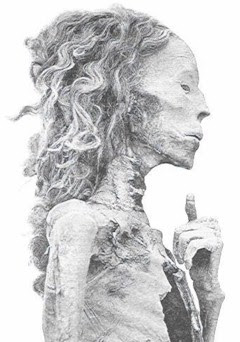Monday, 10 April 2017
Friday, 25 January 2008
Malaysia: Kuala Lumpur Stock Exchange business card holder

Thursday, 13 December 2007
Denmark: clocks
Georg Jensen
Georg Jensen (1866-1935) studied sculpture at the Danish Royal Academy of Fine Arts and initially worked as a designer at the Bing & Grøndahl porcelain factory. He setup his own business but didn't do very well until he switched to silversmithing and by the time of his death had five shops internationally and was a well known Art Deco designer. He always gave his designers free reign however and now the firm produces all sorts of interesting jewellery, watches, cutlery, bowls etc.
These particular pieces were designed by Henning Koppel (1918-1981).
Singapore: Golden chopsticks

These golden chopsticks were given to me by the Singapore Attorney General's office. I suppose they have some symbolic meaning like "have a fruitful life" or "live long and prosper" or "may you win the lottery" or even "eat your food with shiny utensils" but when searching golden chopsticks on the internet all I get is references to the hundreds of Chinese restaurants around the world called "Golden Chopsticks". Maybe they mean "may you have a successful restaurant".
Chopsticks originated in ancient China as early as the Shang dynasty (1600-1100 BC) and are widely used in Asia. The Mandarin Chinese word for chopsticks is kuàizi which is a compound of the words meaning quick and bamboo. The English word "chopstick" seems to have been derived from Chinese Pidgin English, where "chop chop" meant quickly.

"Rubbery noodles!" Probably shouldn't have cooked them for so long, then.
Friday, 30 November 2007
Ireland: Leprechaun

There are arguments about the dervivation of the word leprechaun, but the favourite seems to be that it comes from the Gaelic word luchorpán meaning small bodied. Oddly until the Twentieth Century leprechauns were always described as wearing red, not green.

 "A leprechaun? Me? Begorrah!"
"A leprechaun? Me? Begorrah!"New Zealand: The Tiki

Some say he came from the stars and that he was the first man of the world. Some say his webbed feet suggests a strong link to the creatures of the sea. All I know is that he is called The Stig. I mean, the Tiki.
Tiki was respected as the teacher of all things and the wearer of this symbol is therefore seen to possess clarity of thought, loyalty, great inner knowledge and strength of character. The Tiki is regarded as a good luck charm when worn and in some areas is also regarded as a fertility symbol (that I would rather avoid).
The Māori are particularly unhappy, it seems with plastic, mass-production of this ancient and mythical symbol. But who cares, they're on the other side of the world so they can stick their tongues out all they like.
As far as I am concerned he reminds me of the alien foetus from The Erlenmeyer Flask episode of the X-Files (well he did come from another world- which to most Kiwis means Australia).
 " Oh my God, Mulder, you went to New Zealand and all you brought me back was this?"
" Oh my God, Mulder, you went to New Zealand and all you brought me back was this?" Egypt: Nefertiti plate


This marvellous sculpture was discovered by German archaeologists in 1912. The crafty Krauts recorded the find as something unimportant, buried the details of it in pages of tedious paperwork and fooled the Egyptians (and indeed the French, who ran the Antiquities Department at that time) in to letting it go to Berlin where it has been displayed ever since. Now the Egyptians want it back for their splendid new museum near the Pyramids which is due to open in 2012 (which is why they are dragging some of the Tutenkhamun stuff around the world to raise money for the museum). The German's claim it is too fragile to travel. Didn't stop them in 1912, though!
Hitler's more naturalistic sculpture - very close to the Nottingham picture

Nefertiti's beauty has inspired many artists over the years from this rather peculiar illustration to this rather more clever photograph.

Artistic!












